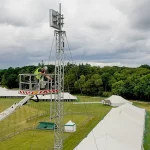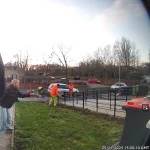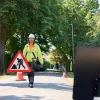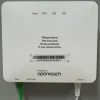Ofcom Summer 2021 Update – UK Gigabit Cover Hits 40 Percent

Ofcom’s latest Summer 2021 report into UK broadband and mobile coverage has revealed that “full fibre” (FTTP) coverage is now at 24% (up from 21% in Jan 2021) and 11.6 million homes (40%) are within reach of a gigabit-capable network (up from 37%). Meanwhile, 4G mobile coverage remains stable and there’s still no data on 5G.
The regulator’s latest report is based on coverage and service availability information that has been received from both fixed line UK ISPs and mobile network operators as of May 2021, which is thus four months more recent than the January 2021 data in their previous update.
Overall “ultrafast broadband” availability (defined by Ofcom as 300Mbps+) has increased from 61% to 62% of UK premises since the last update, while “superfast broadband” (30Mbps+) held steady again at 96%. Furthermore, it’s noted that 6.9 million (24%) premises can now order a Fibre-to-the-Premises (FTTP) service via lots of different networks, which is up from 5.9 million (21%) at the last update (Summary of Full Fibre Builds).
Advertisement
Ofcom also reports that gigabit-capable (1Gbps+) services are now available to 40% of UK premises (up from 37%), which is higher than the FTTP figure because most of the recent growth in gigabit coverage has actually come from Virgin Media’s ongoing upgrade to their existing Hybrid Fibre Coax (HFC) lines with DOCSIS 3.1 technology. A lot of overbuild between HFC and FTTP is also taking place in dense urban areas.
All of this work will no doubt help to support the UK Government’s new £5bn Project Gigabit programme, which aims to further improve the picture for gigabit speed connectivity by using state aid to target connectivity improvements toward the final 20% of hardest to reach premises (i.e. helping to extend gigabit coverage to at least 85% of UK premises by the end of 2025).
The improvements in fixed line coverage also mean that the number of premises which cannot get a “decent broadband” (10Mbps+) service is currently 650,000 (2%), which shrinks to just 134,000 premises if you include delivery via fixed wireless and 4G broadband services (down from Ofcom’s prior estimated in Dec 2020 of 189,000 – thanks to more data from fixed wireless ISPs).
Just to remind readers, a download speed of at least 10Mbps and an upload of 1Mbps represents the core specification for the UK Government’s new broadband Universal Service Obligation (USO), which began in March 2020 and also allows for the use of both fixed line and wireless solutions.
Advertisement
Speaking of wireless services, 4G mobile networks have seen outdoor coverage by all operators combined (EE, Three UK, O2 and Vodafone) hold steady at 98%, while geographic coverage from all operators is still 69%. The new £1bn Shared Rural Network (SRN) agreement will eventually start to change that, but it’s a slow burn. As for 5G coverage, Ofcom will finally start to include that data at the end of this year.
Summer 2021 Coverage Data by Region
The following table summarises the latest mobile and fixed broadband coverage figures for Scotland, Wales, England and Northern Ireland individually, although you can get a bit more detail by downloading the full Summer 2021 Update (PDF).

Mark is a professional technology writer, IT consultant and computer engineer from Dorset (England), he also founded ISPreview in 1999 and enjoys analysing the latest telecoms and broadband developments. Find me on X (Twitter), Mastodon, Facebook, BlueSky, Threads.net and Linkedin.
« Gov Start Build of Project to Map UK Underground Cables and Pipes UPDATE
Another U Turn as Three UK Reintroduce EU Roaming Charges »






















































I should of stuck with ADSL2+ because FTTC/VDSL2 is rubbish it uses Dynamic line management and it interferes with Powerline Adapters.
If vdsl is affecting your powerline adapters you need your house wiring checked as thr house power wires and phone wires should affect each other…
Nevermind RF interference can happen. It isn’t usually a problem with only a couple megabits lost.
I definitely agree with you A Says. I have tried to Vodafone and Openreach to move my phone socket but not getting anywhere. But there is good news according to the Openreach website I am getting FTTP Soon FTTP doesn’t interfere with Powerline Adapters.
G.fast are the worse affected by Powerline Adapters as it chunk off 20-30Meg reduced. Very bad. I removed it off. As my house was all full re-wiring electicity by council are rubbish interferes with over 100 errored seconds in the space of 15 minutes bin by DLM.
At a should’ve waited until FTTP